14.10.2017/By: en.unesco.org
From: http://en.unesco.org/news/teaching-freedom-empowering-teachers
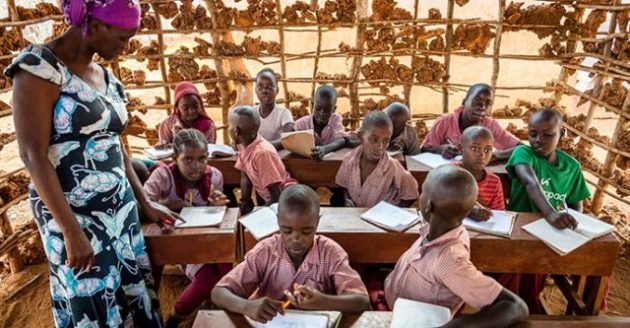
14.10.2017/By: en.unesco.org
From: http://en.unesco.org/news/teaching-freedom-empowering-teachers
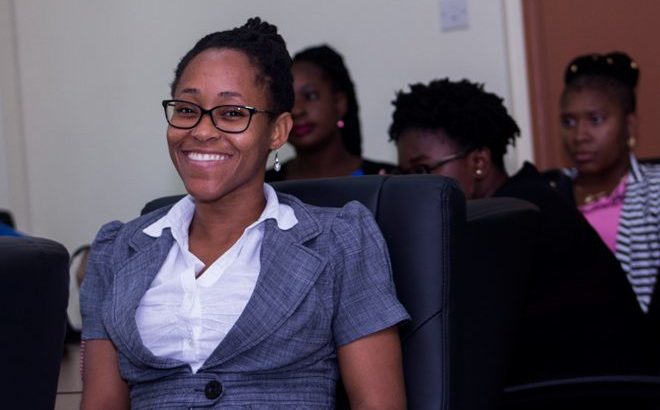
EEUU/October 10, 2017/Source: https://zizonline.com
Following a very turbulent start with weather and other scheduling interruptions, Minister of Education, the Honourable Shawn Richards, said that schools are settled and educators geared as they move full force into the activities for 2017-2018. He underscored a number of opportunities that are available and encouraged teachers to position themselves to capitalize on them.
On the heels of the celebration of World Teacher’s Day which was observed on Thursday, October 05 with a dinner for public school teachers as a show of solidarity and support, the Minister has stated that individual teachers must now make use of the opportunities that are being provided to assist them in upgrading their skills and qualifications towards a better classroom experience.
Minister Richards highlighted the intentions of the ministry in this regard at the start of the Summer Workshops for Teachers in August this year. He revealed a plan of action including “the establishment of a programme of continuous professional development leading to the certification and licensing of teachers.” At its most basic level this included one year of In-Service Training for new teachers which got underway on October 3rd.
He also alluded to the implementation of the CDB sponsored TVET programme that was officially launched in July 2016. “This initiative aims to further solidify the commitment to the development and expansion of Technical, Vocational Education and Training in the federation,” the Minister stated, explaining that this would also involve the amalgamation of all current post-secondary institutions (that is Project Strong, National Skills Training Programme, and the A.V.E.C) into one umbrella organization- the National Training Institute.”
According to the Education official, as the Ministry of Education explores other avenues whereby teachers can secure the necessary qualifications, the ministry is now in discussion with MidWestern State University in Texas to provide an online degree course for teachers where they undertake training which will include a few summers on the campus.
The Ministry of Education has begun the implementation of the 2017-2021 Education Sector Plan. This provides the blue print by which this transformation will continue.
Under the theme: Education for All: Embracing Change, Securing the Future, the plan provides a strategic road-map to improve the provision and administration of education in our Federation.
Source:
Minister of Education underscores opportunities available to teachers for the 2017-2018 school year
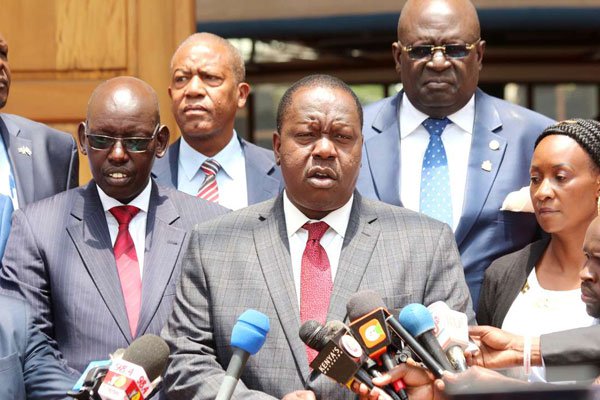
Kenia / 07 de octubre de 2017 / Por: DAVID MWERE / Fuente: http://www.nation.co.ke/
A total of 10,000 teachers are set to be recruited in anticipation of an increased number of students as the government prepares to roll out free secondary education in January.
Education Cabinet Secretary Fred Matiang’i said negotiations with the Teachers Service Commission on hiring were ongoing.
Dr Matiang’i also defended the Sh23.6 billion supplementary budget, saying the amount was critical in actualising Jubilee’s campaign pledges. Dr Matiang’i appeared before a special committee of the National Assembly that is scrutinising the budget.
The amount is part of the Sh46 billion approved by the Cabinet to fund the project and does not include the hiring of the extra teachers.
Dr Matiang’i said the approval of the funding will drastically reduce the fees paid by students in boarding secondary school as the ministry intended to increase the capitation per student from the current Sh12,870 to Sh22,241.
BOARDING SCHOOLS
“The new capitation measures mean that even boarding schools, no matter their status, will be extremely affordable for all. We will expect that their fees will immediately drop,” Dr Matiang’i told the committee chaired by Kipkelion East MP Joseph Limo.
He also resisted attempts by the MPs to cede Sh1.4 billion meant for secondary school infrastructure to be administered through the National Constituency Development Fund as conditional grants, saying such a move would only be sanctioned after consultation with the Treasury.
If the budget is approved by MPs when they resume next week to consider the supplementary estimates that also include Sh10 billion for the fresh presidential election, parents will only be required to meet minimum costs for children in boarding schools. Meals and boarding fees will be the only stand-out costs.
He said the ministry was currently working on capped limits that schools should charge parents ahead of January, but said they expected public institutions to charge minimal fees following the boost in capitation.
INFRASTRUCTURE
The CS also noted that the ministry was working on the required infrastructure for extra-county secondary schools as it targets a 100 per cent transition from primary schools.
The ministry already has a Sh7 billion budget for this work reallocated from last year’s financial plan. At least 903,200 learners are expected to join public secondary schools, with 100,322 joining private institutions.
Dr Matiang’i said Sh600 million for sanitary towels and Sh100 million for emergency cases such as natural disasters was required.
The sanitary towels programme will be channelled through the National Government Affirmative Action Fund currently supervised by women representatives.
Fuente noticia: http://www.nation.co.ke/news/education/Government-plans-to-recruit-10-000-more-teachers/2643604-4125786-qsdk3sz/index.html
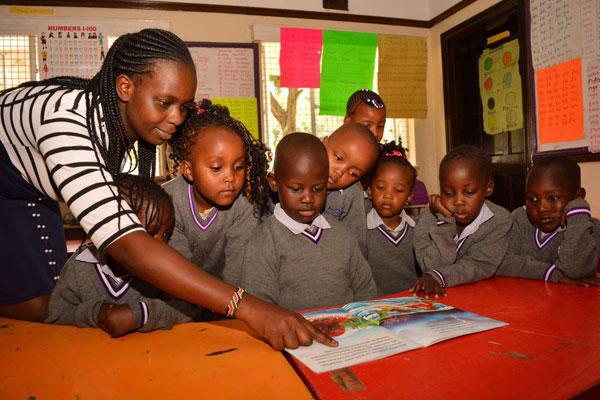
Kenia / 06 de septiembre de 2017 / Por: OUMA WANZALA / Fuente: http://www.nation.co.ke/
More than 170,000 teachers who will oversee the implementation of the new curriculum in January will be trained in two month’s time.
Kenya Institute of Curriculum Development (KICD) Director Julius Jwan said the teachers will be trained in November and December.
Those to be trained are teachers handling nursery, and Class One to Three as the government embarks on competency-based curriculum.
“This term, based on our evaluation report, we cast the net wider to accommodate more teachers because so far, the feedback on the new curriculum is positive,” said Dr Jwan.
Dr Jwan revealed that printing of teacher’s guides, handbooks and pupils’ workbooks has been finalised. The workbooks will also be distribution to pupils with special needs.
SUPPORT MATERIALS
“The curriculum support materials will enrich teaching and learning. A teacher will facilitate learning by focusing more on what learners can perform and not just what they can remember,” he said.
The new system developed to replace the discredited 8-4-4 will fully be rolled out in Form Four by 2023.
Senior Deputy Director for Curriculum and Research Services Jacqueline Onyango said the curriculum designs that have been developed are comprehensive after they were revised to include emerging issues meant to improve learning.
“The curriculum designs provide suggested learning activities, teaching methodology, assessment, resources and time required to cover various topics, thus giving guidance for planning of lessons,” Ms Onyango said.
CURRICULUM DESIGNS
“The methodology of undertaking the activities, resources required and the time the activities will take must be clear in the curriculum designs,” she added.
The new curriculum emphasises on the 21st century skills that enhance graduates to acquire competence that will enable them to create jobs even as they seek to be employed. Piloting of the curriculum was concluded last term and took place in 470 schools.
According to the director, in 2019, the system will be rolled out in Standard Four to Six and in 2020, it will cover Standard Seven, Eight and Form One.
In 2021, it will be extended to Form Two while in the following year, it will cover Form Three.
Fuente noticia: http://www.nation.co.ke/news/education/170-000-teachers-to-be-trained-on-new-curriculum/2643604-4081548-s8mmidz/index.html
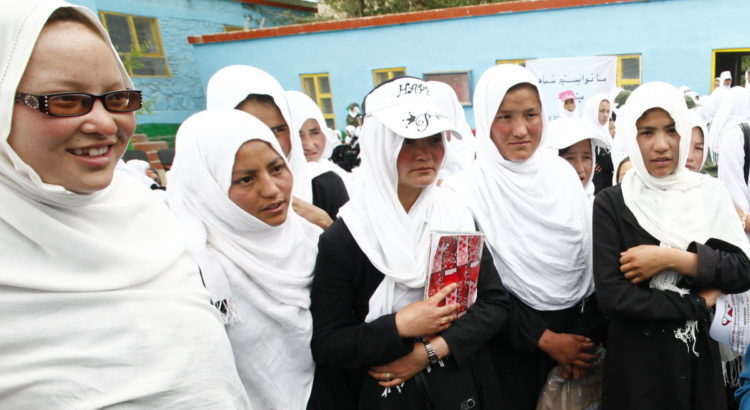
Afghanistan/ August 26, 2017/By: UN Assistance Mission in Afghanistan/ Source: http://reliefweb.int
Afghan girls must be supported in pursuing their education to enable their full participation in all aspects of social and political life, said community leaders at a UN-backed event held last week in the central highlands province of Bamyan.
Department of Education officials, community leaders and students from Bamyan’s northeastern districts of Kahmard, Saighan and Shibar gathered at the event to understand the factors that are contributing to low enrolment of girls.
Bamyan’s northeast districts have been vulnerable to the influence of anti-government elements, just as long-held conservative beliefs continue to restrict the rights of girls in the province.
The recent event, facilitated by the Bamyan regional office of UN Assistance Mission in Afghanistan (UNAMA), was set up so participants could strategize on ways to address these and several other factors, including school infrastructure and teacher qualifications.
“It is essential to have more women teachers and an increased recognition among communities and families as to why sending girls to school is important,” said Najiba, a girl from a local school.
Sayed Ali Ihsani, the head of the monitoring section of Bamyan’s Department of Education, underscored the importance of girls’ education in fostering both development and peace, and urged community leaders to ensure the security of teachers and school monitors.
Participants at the event agreed that the best way forward in addressing the many challenges unique to the province’s northeast districts is to focus on increasing collaboration between communities and local government, and continuing to strategize on ways to reduce poverty and unemployment.
Participants universally called for expanding access to education for girls as a fundamental right, and agreed to convene district-specific meetings between education officials, teachers, parents and community leaders to continue the dialogue and strategize further on education-related issues.
The event was recorded by local media and was broadcast by radio to an audience estimated at 350,000 people in and around the province’s capital city.
UNAMA is mandated to assist the Afghan Government and the people of Afghanistan in the prevention and resolution of conflicts through facilitation of dialogues and provision of ‘good offices’. ‘Good offices’ are diplomatic steps UN takes publicly and in private, drawing on its independence, impartiality and integrity, to prevent international disputes from arising, escalating or spreading.
UNAMA also promotes coherent development support by the international community; assists the process of peace and reconciliation; monitors and promotes human rights and the protection of civilians in armed conflict; promotes good governance; and encourages regional cooperation.
Source:
http://reliefweb.int/report/afghanistan/improving-girls-access-education-bamyan-s-northeast-districts-spotlighted-un

Boston Convention and Exhibition Center, Boston, Massachusetts.
Thank you all for welcoming me here today. I deeply respect you and the work of this organization. This room is full of people who have committed their lives to education — whether as teachers, ESPs, administrators, or other leadership roles — and it’s an honor to be able to talk with you.
In his book “Teaching Toward Freedom,” William Ayers wrote, “To be human is to live alone on the nerve islands of our bodies. To connect with another is to imagine with sympathy. The bridge of humanity is constructed of imagination, a certain kind of imagination, mediated by words.” I read that book very early in my career, and that idea — human connection as a feat of empathetic imagination — has stuck with me. We may not be able to step inside of each other’s heads, as humans, but I think sometimes that our work as teachers is to try.
I remember when President Obama was elected for the first time. The next morning, I went into my classroom, ready to talk with my students about his historic election and hear their reactions to it — after they did the Do Now, of course. I stood at the front of my room with my clipboard, taking attendance the same way I did every day, but I only had one student in the room. There he sat, in his assigned seat right in the middle of the room, facing me, as I checked off a little box next to his name. We looked at each other, looked at the clock, looked at each other. After a few minutes, he asked, “Where is everybody?”
“I don’t know,” I said, “but they’re late.”
We heard a commotion outside and saw some of his classmates running past the window. Then my principal at the time burst through the door. “What are you doing?” he asked. “Come outside!”
We followed him to the busy intersection outside and saw the rest of the school — students and staff — standing there on the corner. Some people held up that day’s paper with a huge picture of President Obama on the front. Others had grabbed mini-whiteboards from classrooms and written, “Honk for Obama” on them. The scene was messy, loud, and joyous.
Standing there still holding my clipboard, a symbol of the rules and routines that made school feel orderly and productive to me, I realized that my stubborn insistence on sticking to the plan and following the rules had been silly. My neat little plan wasn’t what such a historic situation demanded. It wouldn’t have given my students nearly enough time or space to express their joy. I had needed a reminder to, as William Ayers wrote, imagine with sympathy. I needed to remember that my students and I were connected by our shared humanity.
When I decided to become a teacher, I imagined it would be a job that would nourish my deep need to be in control. I had done my reading, of course. I knew that I needed to work against the “banking” model, trying to fill my students’ heads up with all of my knowledge and ideas. But I still envisioned my role as one where I would activate what happened in the classroom. I didn’t imagine myself as an authoritarian, but I thought, I’ll write lessons, so I’ll know exactly what is going to happen. I’ll be in charge.
Of course, we all know what a naïve expectation this was. Teaching, like parenting, can show us just how powerless we really are. The most carefully-crafted plan can be thrown off by a snow day or fire drill, a fight in the hallway, a curious student’s questions that lead us off on an interesting, but tenuously relevant, tangent. Sometimes we realize students know more or less than we anticipated when planning, or a protocol that looked so good on paper falls to pieces when we try to put it on its feet. Or there are the days, like that November day when Obama was elected, when what’s happening outside of the school bangs on the door and demands to come in.
When I got hired to teach ninth grade humanities at the school where I’ve worked for the past decade, I inherited a beautiful course called “Justice and Injustice.” I’ve made it my own over the years, but the bones were there: a course interweaving history content with literacy skills, focused on case studies of moments when people faced injustice and fought for justice. At that time, the final case study of the year focused on South African Apartheid.
I’m a history teacher, so I’m going to take a detour here to tell you a story about Apartheid, but I promise it’ll come back around in the end.
Apartheid officially started in 1948 when the National Party was elected to power in South Africa. By 1948, White South Africans, who were descendants of Dutch and the British colonists, had stripped Black South Africans of the right to vote, forced them to find jobs in dangerous gold mines just to afford the taxes levied on them, and dehumanized them by making them carry passbooks wherever they went to prove that they were allowed to be in areas designated “Whites-only.”
Apartheid-era South Africa was brutal. The government used subjective, racist tests to categorize South Africans by race. Those arbitrary racial categories determined where South Africans could live, who they could marry, and which schools their children could attend. South Africans who resisted these laws risked jail time, fines, or state-sanctioned violence at the hands of the police and military. Around the world, other countries’ governments — including the United States’ — hesitated to sanction South Africa because they benefited from its natural resources.
In the 1960s, the two major anti-apartheid organizations had been banned by the government, and many prominent leaders, including Nelson Mandela, had been sent to prison with life sentences. Many South Africans of color who had grown up under this racist system felt trapped, and some were losing hope.
In 1976, the South African government passed a new law called the Afrikaans Medium Decree, requiring that students be taught in Afrikaans, which was the language spoken by White South Africans descended from the Dutch. Many Black South Africans referred to Afrikaans as “the language of the oppressor.”
Not surprisingly, students were outraged at this new law. Black students already attended segregated schools with overcrowded classrooms, insufficient materials, and a racist curriculum. Now they were expected to learn in a language neither they nor their teachers spoke. They drew inspiration from Steve Biko, a Black Consciousness leader who wrote, “The most potent weapon in the hands of the oppressor is the mind of the oppressed,” and decided to take action. Students in the township of Soweto, outside of Johannesburg, circulated a petition to protest the new law and planned a march and rally at a local stadium.
At 8:15 a.m. on June 16, 1976, thousands of students walked out of five schools in Soweto after singing “Nkosi s’ikele Afrika” — “God Bless Africa.” Students of all ages — including elementary school children — marched peacefully through the streets toward the stadium holding hands and carrying signs reading, “Down with Afrikaans.”
At an intersection, the students encountered the police and the Defense Force, who ordered them to turn back. When the students refused, the police officers set dogs on them. Then they opened fire.
Within 36 hours of the march beginning, 29 people had died, and 250 were injured. The government lost control in Soweto as protests and riots spread. News outlets around the world covered the story, publishing a now-iconic photo of the first person killed by police: 13-year-old Hector Pieterson.
Although Apartheid did not officially end until 1994, the students’ protest had a dramatic impact on the way the world viewed the South African government’s policies. As news of the Soweto Uprising spread throughout the world, it became nearly impossible to ignore the brutality of the Apartheid regime. In the months and years that followed, more and more countries exerted political and economic pressure on South Africa to end Apartheid.
Each year, my students and I study the Soweto Uprising, exploring the ways in which South African students exercised their agency within an oppressive system that sought to silence them and deny their humanity.
Invariably, when we dig into this history, students draw comparisons between the South African students’ activism and their own power and promise as young people. They begin to wonder about what could push them to stand up in the face of injustice and what forms of political power they have. They debate about whether they would be willing to risk their lives so that future generations could live in a more just world. They ask themselves whether adults will ever listen to their voices.
A few years ago, in the wake of Michael Brown’s death in Ferguson, Missouri, my principal received an anonymous email from one of our seniors. It informed him, respectfully but firmly, that students at our school would participate in a walk-out the following day in support of the Black Lives Matter movement.
At this point, staff at the school had a decision to make: would we try to stop the students’ protest? Would we use our authority and power to try to control them? Or would we support them as they put into practice the principles of activism and social justice that we had taught them about since their 9th grade year?
The principal sent a response to the entire school. He explained that, as a community, we supported our students’ rights to protest. He also explained that students who participated would be subject to disciplinary action (like having their parents contacted), since historically, those who chose to protest did so in spite of the consequences. He encouraged students to stay together, to be safe, and to do what felt right to them.
On the day of the walkout, most of the student body left school en masse and gathered on the lawn as one of the seniors went over expectations before they left to travel downtown for a rally. Staff members gathered on the lawn with them, reminded them to be safe, and went back inside with those who chose to stay. That afternoon, the kids at school debated the merits of protest, talked about their connections to Black Lives Matter, and… did class. But no matter where they had chosen to spend their afternoon, our students — and students all over Boston — learned valuable lessons that day.
They learned that adults in their lives would support them in raising their voices at the same time that we worried for their safety. They learned that we would be consistent in our expectations… while also flexible enough to understand when expectations needed to shift. They learned that they didn’t need adults to tell them how, when, or where to organize. They learned that they were members of a community of young people with a shared vision of a more equitable society, and they learned that they had power within that society. They learned that events like the Soweto Uprising aren’t ancient history… and they don’t have to end in tragedy.
A lot of people have asked me what I mean when I say that education can be a tool for social justice, and this is usually the story I tell to show them. As educators, it is our job to prove to our students that adults will listen to their voices. It is up to us to inspire confidence in them that they do have the power to effect change. It is our responsibility to ensure that they are equipped with the tools to insist on a more just and equitable world.
But living up to this vision of our role as educators is not always easy. Sometimes, our kids will point out ways in which systems that we have set up or in which we are complicit contribute to inequity. They will push us to engage in uncomfortable conversations. Their curiosity will force us to question our own assumptions and beliefs. During the Soweto Uprising, the protesting students’ families were rightfully frightened. They had grown up under Apartheid. They knew the danger in protesting. They had seen friends, family members, and political leaders imprisoned or killed for speaking out. They wanted their children to lay low and stay safe. As an adult, one of the protestors recalled, “’76 really represented, in many ways, divorce between black children and their parents.”
We all do this work because of a sincere and collective belief in a better future for our students, and we know that they will be the ones to build it. We have to listen to them and support them in developing their voices and finding their power. And each time we witness our students coming into their own as change-makers, we will be reminded of the value of education: as a site of hope and a community where dreams can become reality.
Looking back at myself as that new teacher clutching her clipboard and wondering what to do when The Plan didn’t go as planned, I can see how much I have grown. I owe a huge debt to the people who have helped me grow along the way: my principal, who encouraged me to “Come outside!” The students of Soweto, whose memories showed me that working for social justice is a long-term project that requires patience, courage, and stubbornness. My own students, who helped me see that, unless I deliberately and explicitly connect lessons from history to our own lives and context, I do them a disservice. And all of you, with whom I share the privilege and the great responsibility of this awe-inspiring profession: to help construct, side-by-side with one another and with our students, “the bridge of humanity,” to imagine with sympathy — or, I’d rather say, with empathy — and strive for justice.
So I have a proposal. As educators, let’s replace our clipboards with time machines. Let’s create school communities in which our students can move from the past to the present to the future all in one day. Let’s work to ensure that education represents liberation. Let’s keep our ears and hearts open to our students’ brilliance, even when it makes us uncomfortable. Let’s envision education as a time machine that helps our students travel to worlds we have only imagined — ones that are built on ideals of justice and equity and collaboration.
Source: